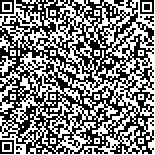|
| 摘要: |
| 城市街道空间是行人心理认知的核心
载体,界面虚实关系的不同自然带来空间形态的
差异,据此建立有关街道界面虚实特点的“界面
节奏—心理认知”研究框架。在心理物理学的
理论框架下,结合感受测量原理与空间知觉理
论,得到街道界面节奏的“物理量—心理量”测
算方法。以沉浸式虚拟现实技术进行心理认知
实验,研究发现街道界面的中断次数、界面空间
的延伸程度是最受行人瞩目的界面节奏特点,据
此构建了频率与幅度参数相结合的定量方法,可
为城市街道空间与行人心理认知相关研究提供
理论基础与实践依据。 |
| 关键词: 街道界面节奏 虚实关系 心理认知 空间知觉 频率与幅度 |
| DOI:10.13791/j.cnki.hsfwest.20220506 |
| 分类号: |
| 基金项目: |
|
| Effect of Urban Street Interface Rhythm on Pedestrian Psychological Cognition |
|
SUN Chenxue, ZHAO Jianbo
|
| Abstract: |
| Urban street space is the core carrier of pedestrians’ psychological cognition, the
difference of virtual-real interface relations naturally brings about the difference of spatial
morphology. Therefore, the research framework of “interface rhythm-psychological cognition”
on the characteristics of virtual-real interface is established. The influence of street interface
rhythm on psychological cognition mainly involves two aspects: one is the influence of
geometric characteristics of urban street interface rhythm on pedestrians’ psychological
cognition; the other is the quantitative method of urban street interface rhythm based on
pedestrians’ perceptual law. Based on the description method of waveform graph, there are
four main characteristics of street interface rhythm: the number of street interface interrupts,
the spatial depth of street interface, the extended relationship of the street interface, the spatial
distribution of street interfaces.
Based on psychophysics and spatial perception theory, this paper attempts to construct
a quantification algorithm that directly deduces “mental sensory quantity” from “physical
stimulus quantity”. Under the framework of psychophysics, combining the principles of
sensation measurement and spatial perception, the “physical quantity-mental quantity”
measurement method of street interface rhythm is derived as follows:
1) Mental quantitative methods based on psychophysical “the principle of perception
measurement” and power law. The principle of perception measurement provides theoretical
support and feasibility for the operation method of directly deriving sensory quantity (or
degree) from physical stimulus quantity (or degree). The power law provides a bridge for
equivalent conversion from “physical stimulus quantity” to “mental sensory quantity”. By
substituting the specific value of stimulus quantity and related power index into the power law
formula, the mental sensory quantity about this stimulus quantity can be solved.
2) Mental quantitative methods based on the spatial perception theory and Weber’s law.
The theory of spatial perception explains the relationship between visual distance and visual
perception. Weber’s law describes the mental process of “feeling”, the stage before “perception”.
Combining the spatial perception theory and Weber’s law, a mental quantitylgorithm can be
constructed to obtain thevariation degree of interface rhythm. This method can effectively
explain the degree of psychological feeling under the synergistic influence of street interface
rhythm change degree and spatial reference object, which has reference value for analyzing the
interface rhythm characteristics that may be influenced by the width of main street a0.
From the perspective of the physical and mental law of pedestrians, this paper uses VR
technology to conduct psychological cognitive experiments. The study of Tianjin City showed that the number of street interface interrupts (the
number of street space), the spatial depth of street interface (“space along the street—large/small” and “distance of road node from main street—
far/near”)is the most pedestrian interface characteristics of rhythm, with “frequency” and “amplitude” quantitative description for the above two
characteristics; The “physical quantity and mental quantity” of frequency has a 1:1 linear relationship, while the “physical quantity and mental
quantity” of amplitude has a positive correlation with the larger the stimulus difference amount, the greater the sensory quantity. The frequency
is negatively correlated with the perception of interface continuity, the value of the small amplitude set was positively correlated with the sense of
linear interface intricacy and the depth of the side interface, and the value of the large amplitude set was negatively correlated with the physiological
perception of road accessibility.
This paper constructs a quantitative description method to describe the “physical-mental” co-variation relationship of street interface rhythm,
which provides an effective way to solve the interdisciplinary problem of the relationship between street interface rhythm and pedestrians' mental
cognition. The quantitative analysis and experiment of street interface and pedestrians’ mental cognition can be applied to the research on the
relationship between the adjacent space environment of urban streets and pedestrians’ conscious activities, and the research results can be used as the
evaluation basis for the design and renewal of urban street walking space. |
| Key words: Street Interface Rhythm Virtual and Reality Psychological Cognition Spatial Perception Frequency and Amplitude |


